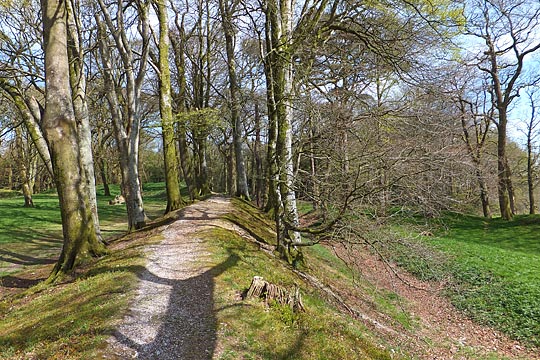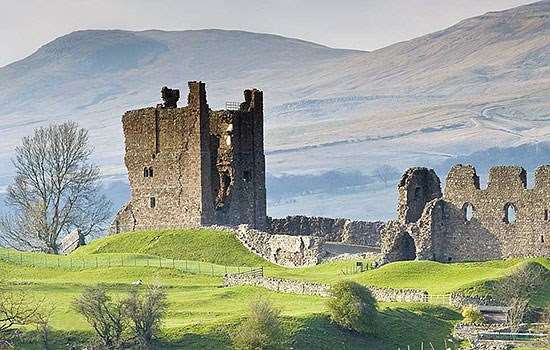History of Blackbury Camp
Blackbury Camp, or Castle, is one of many similar sites across southern Britain dating from the period known as the Iron Age (from about 800 BC to the 1st century AD).
A favourite place for picnics, it is now hidden within woodland, which makes its appearance in the Iron Age hard to imagine.

The lowland areas of Devon and Cornwall are densely scattered with Iron Age settlements. They offered richer soils than the moorland sites favoured in earlier times. Most of these Iron Age hillforts or settlements are located on hill slopes or at the end of ridges, overlooking springs or river valleys, probably for pastoral rather than defensive purposes.
Blackbury Camp is no exception. It straddles a narrow ridge running eastwards from a plateau, near the junction of two ancient tracks. This position gave good access to valley pastures and to two nearby streams, although it was not easily fortified.
Description
The enclosure at Blackbury is oval in shape, roughly 200 metres (660 feet) long by 100 metres (330 feet) wide. Surrounding it is an impressive rampart, now about 3 metres (10 feet) high and up to 10 metres (33 feet) wide. This is built from clay and flints quarried from an outer ditch which measures up to12 metres (39 feet) wide.
The single entrance on the south side is defined by large ramparts. It was about 5 metres (16 feet) wide and would originally have been revetted with timber and contained a large gateway with timber gates, possibly set within a timber gate-tower. The ground surface around the entrance was gravelled with pebbles from the stream below, suggesting that heavy use was expected during the wetter months of the year. Three other gaps in the rampart are thought to be more recent features.
The most remarkable feature of Blackbury Camp is the earthwork in front of the entrance, which is triangular in shape, and flanked by a bank and ditch. Settlements of this period usually have additional, outer enclosures, but these are normally arranged in concentric circles around the main one. We do not know whether the outer enclosure at Blackbury was intended to be defensive or whether it had a practical use, perhaps as a holding area for cattle.
Excavations
The site was excavated in the 1950s, when the finds included the remains of a hut, various trenches, a cooking pit, an oven, pottery and a hoard of over 1,000 slingstones. Parts of two rectangular structures built against the inner face of the rampart may be the remains of medieval or later buildings.
The Iron Age pottery that was found is simple and made from the local Greensand clays. It is most likely that settlements like Blackbury were the defended homesteads of the wealthier members of society: the inner enclosure would have been the area where the owner and family lived, while the outer enclosure was probably designed to protect the homestead pastures and watering places.
Further Reading
Young, A and Richardson, K, ‘Report on the excavation of Blackberry Castle’, Proceedings of the Devon Archaeological Society, 5 (1954–5), 43–67


